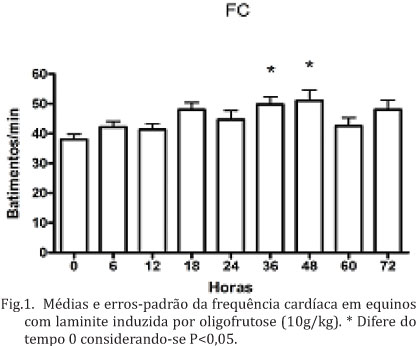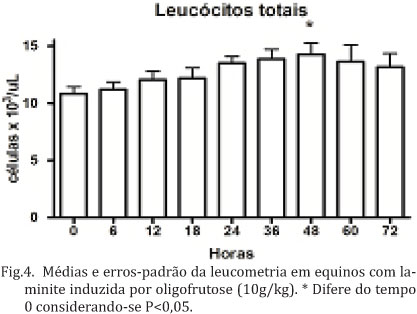Leucocytes recruitment to tissues is an essential part of the innate immune response and an unregulated process can result in tissue damage. Thus, leucocytes infiltration has been implicated in the pathogenesis of acute laminitis. The objectives of this stud were to determine the effect of an antagonist for CXCR1/2, a chemokine receptor for neutrophils attraction on clinical signs and hematological parameters in horses given oligofructose to induce laminitis. Twelve horses were given oligofructose (10g/kg bw PO) in time 0 and divided into two groups: one treated (30mg/kg bw. ICXCR1/2 IV, times 6, 12, 18 e 24 h) and the other not treated. Cardiac and respiratory frequency, rectal temperature, mucous membrane colour, digital pulse, hoof sensitivity and Obel's grade of lameness were recorded. Values for RBC, WBC and blood glucose, BUN, creatinin, ALT, AST, alkaline phosphatase, GGT, total bilirubin and serum protein concentrations were measured on times 0, 6, 12, 18, 24, 36, 48, 60 e 72 h. All the horses given oligofructose developed signs of endotoxemia like diarrhea, fever and leukocytosis and laminitis. Also, CXCR1/2 antagonist treatment did not cause any adverse effects. However, this substance when injected intravenously (30mg/kg) 6/6 hours in 4 applications, did not ameliorate clinical and hematological signs of endotoxemia.
Horse; laminitis; neutrophils; chemokine









